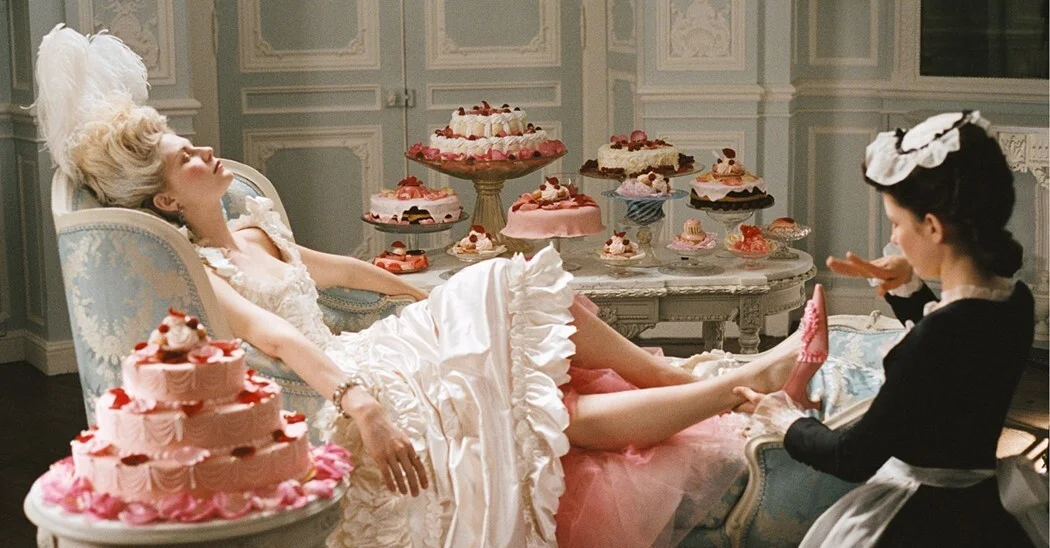The French queen is credited with a phrase that has become a symbol of misunderstanding of how hard life is for the poor. We checked to see if she actually said this.
The quote, purportedly from Marie Antoinette, who was executed in 1793, has long been one of the most famous in popular culture. Of course, it occurs in numerous collections of quotes, it is used in critical texts on political And economic topics. In 2006, Sofia Coppola's film about Marie Antoinette was released, in which the expression “Let them eat cake” pronounces Queen played by Kirsten Dunst.
To begin with, we note that the established translations into both Russian and English (Let them eat cake) are not entirely correct. In French, the phrase sounds like Qu'ils mangent de la brioche, that is, literally - “Let them eat brioche.” Brioche is a sweet, buttery brioche traditional in France. This is the phrase you need to look for in historical sources.
The earliest reference to the expression Qu'ils mangent de la brioche is Jean-Jacques Rousseau's Confessions, written in the mid-1760s and first published in 1782. In the sixth volume of this autobiographical book it says: “Finally, I remembered the extreme measure of the great princess, who, when she was told that the peasants had no bread, replied: “Then let them eat brioche.” Three details are worth noting. Firstly, Rousseau does not attribute this expression directly to Marie Antoinette - on the contrary, he uses the word “princess” with an indefinite article (d’une grande princesse). Secondly, the future French queen was only about ten years old at the time of writing, and she married the French king came out only in 1770. Thirdly, in the sixth book of the Confession the speech is completely coming about the events of the first half of the 18th century.
The earliest written mention of the phrase “brioche” in connection with Marie Antoinette is found in the 1840s, half a century after the queen’s execution. Alphonse Carr, journalist and editor of the still existing newspaper Le Figaro, in 1843 wrote: “We remember what indignation they (the queen’s enemies - editor’s note) caused at one time against Queen Marie Antoinette by spreading a rumor that she, having heard that people had no bread, replied: “Let them eat brioche!” According to the journalist, the queen’s enemies borrowed the very idea of the phrase from a source in 1760 (the future Marie Antoinette was five years old at the time), where it was attributed to a certain Italian aristocrat.
And yet: could the very young Marie Antoinette (in the 1760s, by the way, still the Austrian Archduchess Maria Antonia Josepha Johann of Habsburg-Lorraine) be the author of this phrase, despite the reservations listed above? We were unable to find any historical research to support this version. Some attributed to the authorship of the phrase about brioche to various court ladies: the daughter of Louis XV Madame Victoire, his favorite Madame du Barry and even the famous Madame Pompadour. However, Veronique Campion-Vincent and Christine Shojai Kavan in their article about the famous expression evaluate many of these attributions are considered dubious.
The same researchers offer look for the roots of the phrase in the history of another revolution - religious, not political. The Reformation in Germany in the 16th century led, among other things, to peasant wars, economic problems and, as a consequence, famine. It is not surprising that in several sources of that time one can find a story about a noble lady who does not understand how hard life is for commoners. Phrases very similar to those attributed to Marie Antoinette became local sayings. Moreover, there is evidence that Maria Theresa, the wife of Louis XIV, made a very similar statement, but instead of brioche it featured “la croûte de pâté”.
At the same time, as scientists note, Marie Antoinette was not only extremely unpopular in pre-revolutionary France - she was considered depraved, extravagant and simply narrow-minded. Many other ladies who were credited with similar statements had a similar reputation. Campion-Vincent and Shojai Kavan see in this a typical manifestation of folklore, not only in relation to representatives of the nobility, but also in relation to women, whose position at that time (even in the aristocratic environment) remained rather disadvantaged. Not the least important role was played by the fact that Marie Antoinette was not French by origin, but Austrian.
However, the use of similar constructions is also attributed to men, both to Marie Antoinette’s contemporaries and to those who lived earlier and later. It is interesting that usually in such cases the alternative to bread is not brioche, but something much less pleasant, and the phrase itself is associated not with frivolity, but with aggression. Thus, in testimonies from the time of the Great French Revolution, instead of a sweet bun, hay or grass appears, and in German sources from the time of the Reformation - “shit”. True, there are much “kinder” examples. For example, in the chronicles of the 7th century fixed An incident in which Emperor Hui of China's Jin dynasty was told that his people were starving due to a shortage of rice. He allegedly replied: “Then why don’t they eat meat porridge?” By the way, this expression has become idiomatic in Chinese.
Thus, there is no reliable evidence that the author of the phrase “Let them eat brioche then” belongs to the French Queen Marie Antoinette. Even if she really did pronounce it, she was unlikely to be the “discoverer” of such a phrase. Many evidences of varying degrees of reliability have been preserved, which put expression into the mouths of her contemporaries and, what is much more important, people who lived much earlier. Apparently, we are dealing with a rather archetypal saying, a kind of meme, which has been attributed to various noble ladies (often unnamed) since at least the 16th century. Later it “stuck” to Marie Antoinette as the most famous and at the same time the most stereotypical embodiment of this image.
Incorrect quote attribution
- V. Campion-Vincent, C. Shojaei Kawan. Marie-Antoinette et son célèbre dire: deux scénographies et deux siècles de désordres, trois niveaux de communication et trois modes accusatoires
- K. Dushenko. Large dictionary of quotes and popular expressions
If you find a spelling or grammatical error, please let us know by highlighting the error text and clicking Ctrl+Enter.






